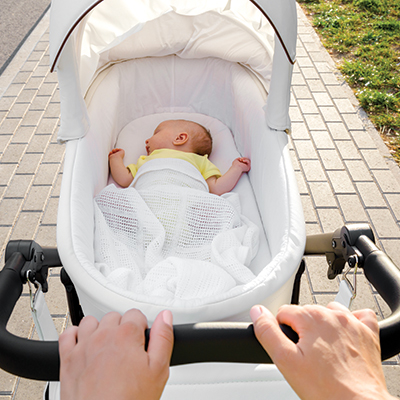
Survivor – New Mom Edition
- Home
- Live Well Blog
- Survivor – New Mom Edition
If you’re a brand new mom, you may feel like you’re on an episode of “Survivor”. Life with a new baby can be pretty rough. You’re sleep deprived, often unable to take a shower and at times you feel like crying—especially when you look in the mirror or try to put on your “before baby” clothes. Welcome to new motherhood! Survival for new moms includes 4 basic topics: Schedule, Sleep, Mood and Food. Just repeat after me: I can DO this!
Schedule
What schedule? The thing about having a new baby is it’s hard to have a regular routine. In fact, if you try to put your baby on a schedule, it can mess up their internal feeding “clock”, which can lead to overeating. On the other hand, not having any routine can make you feel disorganized and out of sync. To help, try writing a list of things you want to get done each day. For example:
- Monday morning: make a menu and a grocery list.
- Tuesday afternoon: go grocery shopping.
- Once a day: take a walk.
Those first few weeks, don’t put much on your daily schedule. As you get used to your baby’s routines and feel more rested, you can increase the things you can get done in a day and add more detail to your to-do list. Just remember that as your baby grows and changes, so will their (and your) schedule!
SLEEP
That thing everybody says—“sleep when the baby sleeps”—is true. If you don’t rest when they do, you won’t have the energy to keep up—and not being rested can affect your milk supply, your mood, and your risk of getting sick.
Not getting enough sleep can even affect your weight loss! Exercise can help you relax and sleep better, so put your baby in the stroller and take a walk around the block or take a lap inside the nearest discount store.

Not getting enough sleep can even affect your weight loss! Exercise can help you relax and sleep better, so put your baby in the stroller and take a walk around the block or take a lap inside the nearest discount store.
MOOD
Do your moods go up and down like a roller coaster? Does this describe you at times:
anxious
irritated
restless
sad
hopeless
teary-eyed
These are symptoms of the “baby blues” which affect most women the first few weeks after delivery. Talking to someone and getting help around the house is your first line of defense.
But if these feelings continue or become stronger, you may have postpartum depression, which happens to about 1 in 10 new moms. Finishing simple chores around the house may seem impossible, you may not be able to sleep or eat, or you may feel very anxious. It can get so bad that you may have thoughts of hurting yourself or your baby.
You may be ashamed to tell anyone about these feelings, but it’s so important that you get help! Talk to your health care provider, the WIC nutritionist, peer counselor or your pastor about your feelings.
FOOD
A friend of mine had a baby with colic—she lived on crackers for days. Don’t let this happen to you! Use these tips to have food ready when you need it.
- Friends and family will ask how they can help. Ask them to cook for you and give them ideas of what to make. Store in freezable containers or zipper bags.
- Make a menu—this may be the most important tip and it will keep you from standing in front of the refrigerator at 5 pm saying, “what can I make for dinner?”
- Use a crockpot to make one-dish meals—like chili, stews and even brisket. Eat some now and freeze the rest for later.
- Make blender meals or snacks with yogurt, frozen fruit and a few spoons of uncooked oatmeal. Toss in some spinach or kale to turn it green and punch the nutrients up a notch.
Remember, the days may seem long, but the years go fast, so enjoy them!